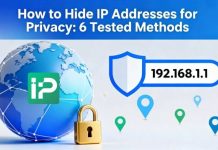Cyberattacks continue to increase, costing businesses significant time and money. Hackers focus on companies of all sizes, leaving everyone vulnerable. Many business owners feel inundated when trying to safeguard their data with proactive strategies.
Here’s a fact: by 2023, cybercrime damages will reach trillions annually. However, many attacks can be prevented with the proper measures. This guide will lead you through straightforward actions to secure your business against threats. Act now to stay protected from hackers!
Table of Contents
Assessing Cybersecurity Risks
Evaluate your network for weak points before attackers find them. Identify outdated software, unsecured devices, and misconfigured security settings. Pinpoint areas where sensitive data is most vulnerable. Conduct regular vulnerability assessments to stay ahead of threats. Monitor system access logs and watch for unusual activity. Look for gaps in employee training or awareness that could lead to mistakes.
Proactive Strategies for Cybersecurity
Stay prepared for threats by taking intelligent actions before problems occur. Consider it like repairing the roof on a sunny day rather than during a storm.
Implementing AI-Driven Threat Detection
AI-powered tools scan networks for abnormal behavior and identify cyber threats more quickly than manual methods. These systems examine large volumes of data instantly, identifying patterns that might escape human observation. For example, they can alert organizations to unexpected login attempts or irregular file access during unconventional hours, assisting businesses in taking action before any harm is done.
Incorporating artificial intelligence into security practices conserves time while enhancing efforts to counteract threats. Machine learning models adjust to emerging risks as hackers refine their methods. “The most effective defense is an intelligent defense,” experts highlight, stressing AI’s importance in current cybersecurity tactics.
Regular Network Monitoring and Vulnerability Assessments
Monitoring your network is like watching over a vault of treasures. Many businesses partner with experts like the support team at NetGreene, who specialize in continuous monitoring and proactive vulnerability assessments to stop risks before they escalate.
- Implement continuous monitoring tools that track unusual traffic patterns. These tools identify suspicious activity immediately.
- Perform vulnerability assessments every quarter to find weak points. Hackers often focus on outdated systems or ignored software updates.
- Apply trusted security protocols to scan for hidden threats like malware or phishing attempts. This process helps minimize risks before damage occurs.
- Restrict access to sensitive areas of your network by assigning permissions carefully. Fewer entry points mean fewer chances for breaches.
- Evaluate firewalls regularly to ensure they can handle new cyber risks or attacks. Outdated defenses give hackers an easy access point.
- Maintain logs detailing all attempts to enter or interact with your systems. A detailed record simplifies investigations if something goes wrong.
- Hire ethical hackers to test your defenses through penetration testing exercises annually. Feedback from these tests helps strengthen weak spots quickly.
- Assess third-party integrations connected to your business operations as part of reviews, too! Partners’ vulnerabilities can create unexpected entry points!
Employee Training and Awareness Programs
Employees often remain the first line of defense against cyber threats. Training them reduces risks and strengthens a company’s overall security posture.
- Conduct regular workshops to teach employees about phishing attacks, password hygiene, and common online scams. Use real-life examples to make lessons stick.
- Create engaging simulations, such as fake phishing emails, to evaluate how well staff recognize threats in real-world scenarios.
- Share simple cybersecurity protocols like locking screens when leaving desks or avoiding suspicious USB drives. Make these habits second nature for your team.
- Develop easy-to-follow guides that explain how to respond to potential security breaches or questionable activity on their devices. Keep instructions clear and accessible at all times.
- Encourage open communication about cybersecurity issues by fostering a no-blame culture where team members feel safe reporting mistakes quickly without fear of repercussions.
- Organize quarterly refresher courses to keep everyone up-to-date with the latest risks and tactics used by hackers.
- Provide incentives like small rewards or recognition for employees who excel in following security practices or identify potential vulnerabilities early.
- Collaborate with external experts to deliver specialized training sessions suited to your industry’s specific risks and compliance requirements.
Data Encryption and Secure Backup Systems
Protecting sensitive data is crucial for any business. Encrypting data and securing backups can help prevent significant losses during cyberattacks.
- Use encryption tools to scramble data and make it unreadable without a key. This provides a strong layer of protection against unauthorized access.
- Store backup files in off-site or cloud locations to safeguard them from physical damage or local breaches.
- Perform regular tests on your backup systems to confirm they function when needed. Testing reduces the risks of corrupted or incomplete restores.
- Set up automatic backups instead of relying on manual processes to save time and prevent oversight errors.
- Adopt comprehensive encryption for transferring critical information between users or systems, ensuring safety throughout its journey.
- Protect backup locations with secure passwords, firewalls, and limited user access controls to further reduce vulnerabilities.
- Maintain multiple copies of backups across different media, like external drives and trusted cloud services, for added resilience.
Encouraging these practices strengthens your defenses against threats, especially those targeting unprotected data sources!
Adopting Compliance and Governance Standards
Strong compliance and governance standards act as a shield for businesses. Regulatory frameworks like GDPR, HIPAA, or CCPA demand consistent monitoring of your data handling practices. Following these rules helps prevent costly penalties while building trust with clients and stakeholders. Establishing clear internal policies keeps everyone aligned.
Auditing systems regularly ensure that security protocols meet legal requirements. Conduct checks to confirm encryption methods align with industry norms and employee access remains appropriately limited. Monitoring changes to regulations prevents gaps in protection strategies. Thorough measures and proactive strategies here form a foundation for incident response planning next.
Strengthening Incident Response Plans
Draft clear roles for each team member in a security breach as one of your proactive strategies. Assign responsibilities like communication, mitigation, and analysis to avoid confusion when time is critical. Speed matters during incidents, so predefined actions reduce delays.
Test response plans with regular simulations or tabletop exercises. These drills help expose weak areas and prepare employees for real-world attacks. Use lessons learned to adjust processes and improve readiness over time.
Utilizing Multi-Factor Authentication (MFA)
Adding MFA significantly reduces the risks of unauthorized access. This method requires users to confirm their identity in multiple ways, like entering a password and verifying a code sent to their phone. It makes hacking attempts much harder, even if passwords are stolen.
Hackers often target businesses with weak security protocols. MFA acts as an additional layer to your data protection system. Safeguard sensitive information by combining something the user knows (a password) with something they have (a smartphone or key fob).
Embracing Zero-Trust Security Models
Many organizations rely on trusted providers such as Masada to implement Zero Trust, ensuring strict identity verification and access controls are built directly into their security strategy. A zero-trust approach presumes potential threats may arise both within and beyond your network. Every user, device, or system must confirm its identity before accessing data or resources.
Restrict access to only what is necessary. Implement strict permissions and authentication checks for employees across all roles. Continuously monitor activities to identify unusual behavior promptly.
Conclusion
Staying ahead in cybersecurity isn’t optional anymore; it’s critical. Modern threats demand smarter defenses and better preparation with proactive strategies. Protecting your data starts with small, deliberate steps like training staff or encrypting files. Don’t wait for a problem to knock on your door. Act today to secure tomorrow.











